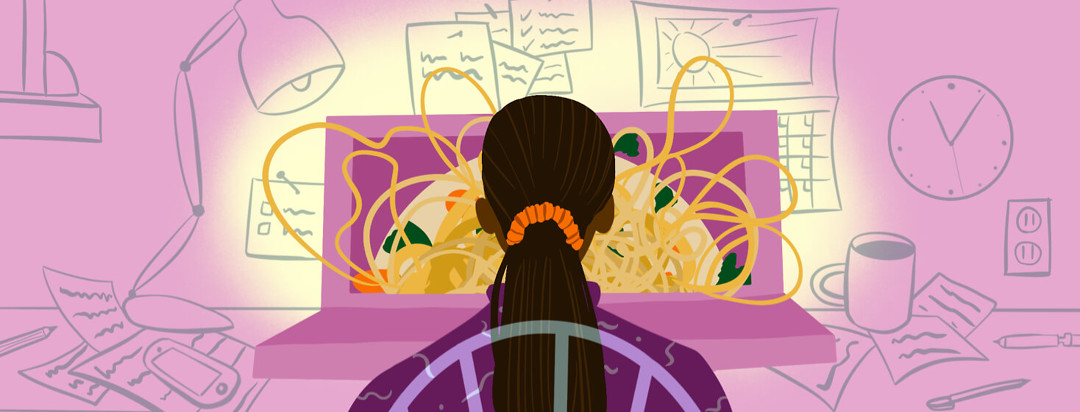Suddenly Working From Home? How to Stay on Track
I don't know if you've heard, but the United States has pretty much shut down and many of us are working from home. And according to Instagram, many of those newly remote employees are also having a hard time keeping their hands out of the cookie jar and their heads out of the fridge.
Healthy eating tips for working from home
Luckily, I’ve been working from home for years now, so I’ve got all sorts of ideas up my sleeve for how to stay on track (and out of the kitchen) during this difficult and unusual time.
1. Eat on a schedule
When you were going into the office, your day (and meals) probably had a natural rhythm. You’d wake up, have breakfast, go to work, answer some emails and put out some fires, have a snack in the break room, work some more, eat lunch in your office, work until the afternoon slump hit, have a snack, work until quittin’ time, go home, have dinner. Or something like that.
But now, all bets are off. You don’t have a routine. You can eat any time you want. Heck, if you’re like me, half the time your laptop is set up at the kitchen table with the fridge staring right at you! This is where having a schedule comes in.
I usually eat breakfast an hour or so after I wake up, have lunch a few hours later, an afternoon snack, and dinner (with dessert). You don’t have to do what I do, you should do what works for you.
Having a schedule, even a loose one, is helpful. If you’ve decided you’ll have three meals and two snacks, once you’ve eaten that afternoon snack you know it’s not time to eat again until dinner. If you decided to have your morning snack at 10:00 am but you find yourself rummaging through the cupboard at 9:22, you can remind yourself of your schedule and get back to work for a while.
2. Commit to sitting down while you eat
Here’s what I’ve noticed: It’s easy to trick yourself into thinking you’re not really eating if you just grab a handful of something while you’re standing up in front of the cupboard. That’s why committing to sitting down for every bite is so important during this strange time - it keeps you aware and accountable.
Prepare your food. Take it to a table. Eat it. Put your dishes away. The end.
3. Consider getting rid of food that speaks to you all day long
Is there a food that calls to you? Maybe it’s BBQ chips, maybe it’s peanut butter cookies, maybe it’s cheese puffs. Whatever it is, if it’s not in the house, you can’t eat it. If someone else in the house loves it (say that teenager of yours with the metabolism of, well, a teenager), have them put it somewhere only they know about. If you're not aware of it, you won't be able to hear it calling for you.
4. Check in to see what you’re really hungry for
Sometimes you want a snack because you want a distraction, not because you’re hungry. Perhaps you’re lonely working at home, or bored because you can’t have your usual chat sessions with your co-workers. Maybe you live alone in a city and feel like you can’t leave your house.
Whatever it is, if you just ate and know you can’t possibly be hungry, try giving yourself a break. Get up from your computer. Go outside if you can. Do some stretches. Read something that’s not work (or news!) related. FaceTime with a friend. Connect to someone. Give yourself the thing you really crave.
5. Give yourself some grace
None of this is easy. None of us have ever had to do this before. It’s scary, it’s boring, it’s lonely. You might eat more than you normally do. You might be more attracted to items with more sugar or fat than normal. Do your best. Talk remotely to your healthcare providers and/or dietitian. Take care of yourself as best you can and give yourself some kindness during these difficult times.
You've heard it before, but we're all in this together. We're all struggling through this together. It's okay to make mistakes. You've got this.
Note: This article was written on March 23, 2020. Further developments in what we know about the Coronavirus are continuously emerging.

Join the conversation